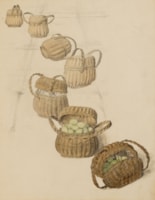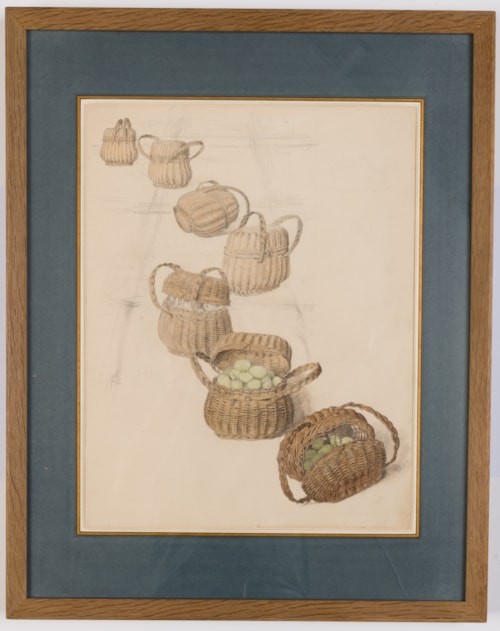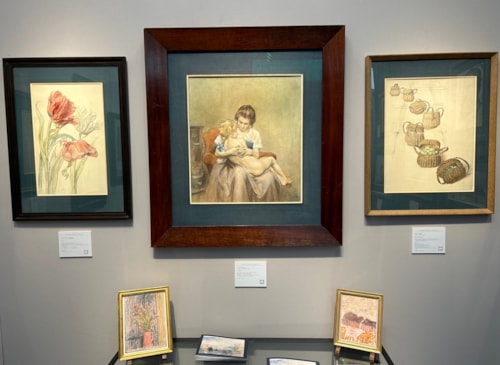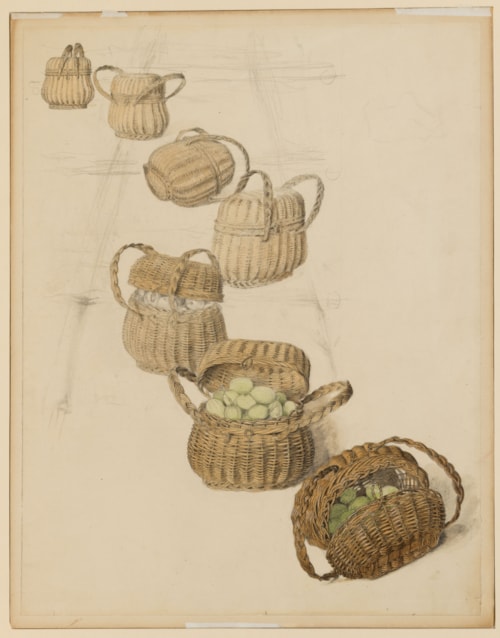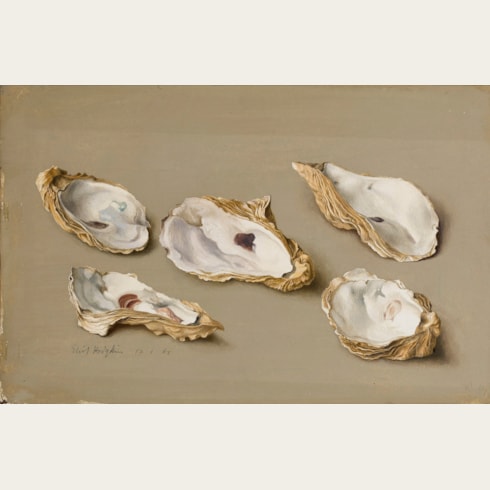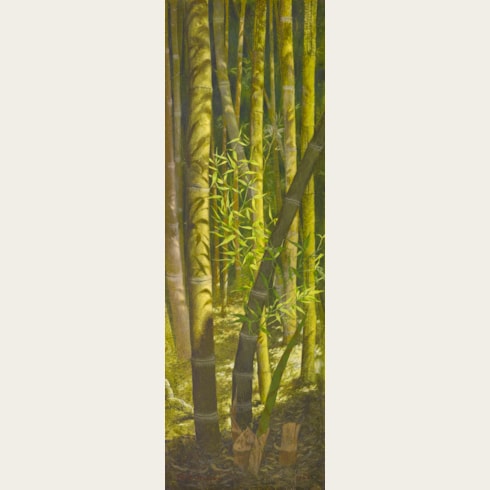Eliot HODGKIN
(London 1905 - London 1987)
Seven Little Baskets
Sold
Pencil, pen and brown ink and brown wash, and watercolour, with touches of white heightening, on paper laid down on board.
423 x 329 mm. (16 5/8 x 13 in.)
423 x 329 mm. (16 5/8 x 13 in.)
In 1957, in response to an enquiry from the editors of The Studio magazine, Eliot Hodgkin provided a succinct description of his lifelong interest in still life painting: ‘In so far as I have any conscious purpose, it is to show the beauty of natural objects which are normally thought uninteresting or even unattractive: such things as brussels sprouts, turnips, onions, pebbles and flints, bulbs, dead leaves, bleached vertebrae, an old boot cast up by the tide. People sometimes tell me that they had never really ‘seen’ something before I painted it, and I should like to believe this…For myself, if I must put it into words, I try to look at quite simple things as though I were seeing them for the first time and as though no one had ever painted them before.’
This large drawing was included in the two most comprehensive exhibitions of Hodgkin’s work to date; Eliot Hodgkin, Painter & Collector at the Hazlitt, Gooden & Fox Gallery in London in 1990, and, more recently, Brought to Life: Eliot Hodgkin Rediscovered at Waddesdon Manor in 2019. As Adrian Eeles has noted of this large sheet, ‘Unusually for Eliot, this drawing is not signed or dated…A guess would be the early 1970s. The three open baskets are filled with gooseberries and cherries. One of the baskets has survived in the Hodgkin family collection.’ A related tempera study of four of the same wicker baskets, signed but likewise undated, is in a private collection.
This large drawing was included in the two most comprehensive exhibitions of Hodgkin’s work to date; Eliot Hodgkin, Painter & Collector at the Hazlitt, Gooden & Fox Gallery in London in 1990, and, more recently, Brought to Life: Eliot Hodgkin Rediscovered at Waddesdon Manor in 2019. As Adrian Eeles has noted of this large sheet, ‘Unusually for Eliot, this drawing is not signed or dated…A guess would be the early 1970s. The three open baskets are filled with gooseberries and cherries. One of the baskets has survived in the Hodgkin family collection.’ A related tempera study of four of the same wicker baskets, signed but likewise undated, is in a private collection.
Eliot Hodgkin studied at the Byam Shaw School of Art and, for a very brief period, at the Royal Academy Schools, where he learned to paint not only in oils but also in tempera, influenced in this medium by the work of Joseph Southall and Maxwell Armfield. He began his career as a mural painter and fashion illustrator, publishing a book on the subject in 1932, but by the middle of the 1930’s was established as a painter of still lives and landscapes, exhibiting regularly at the Royal Academy. Within a year or two of his first one-man exhibition, held in a London gallery in 1936, Hodgkin had begun working in egg tempera, and many of his finest works were painted in this demanding medium. As he wrote in an essay published in 1967, ‘tempera has no attraction for me simply because it was used by the Italian primitives, most of whose work does not greatly appeal to me. I use it because it is the only way in which I can express the character of the objects that fascinate me. With oil paint I could not get the detail without getting also a disagreeable surface: moreover I should have to wait while the paint dried before continuing.’
During and after the Second World War, Hodgkin painted a number of views of plants growing amid the bombed wreckage of London, exhibiting some of these works at the Royal Academy. He also regularly exhibited his work at The Leicester Galleries, the Reid Gallery and Agnew’s in London and Durlacher Brothers in New York. Although he turned down the opportunity of becoming an Academician in 1959, Hodgkin continued to show at the Royal Academy throughout his career, exhibiting a total of 113 paintings at the Summer exhibitions between 1934 and 1981. His subject matter remained largely confined to still life compositions and landscapes, generally on a small and rather intimate scale. Owing to worsening eyesight, Hodgkin gave up painting in 1979, and a sale of the contents of his studio was held in London in 1983, four years before his death.
Provenance
The estate of the artist
Mimi (Mrs. Eliot) Hodgkin, London, in 1989
Jack (later Sir Jack) Baer, London, by 1990
By descent to his wife, Diana, Lady Baer, in 2019
Her sale (‘The Joy of a Lifetime: The Estate of Sir Jack and Lady Baer’), Stansted Mountfitchet, Sworders, 4 October 2022, lot 80.
Mimi (Mrs. Eliot) Hodgkin, London, in 1989
Jack (later Sir Jack) Baer, London, by 1990
By descent to his wife, Diana, Lady Baer, in 2019
Her sale (‘The Joy of a Lifetime: The Estate of Sir Jack and Lady Baer’), Stansted Mountfitchet, Sworders, 4 October 2022, lot 80.
Literature
Adrian Eeles, ed., Brought to Life: Eliot Hodgkin Rediscovered, exhibition catalogue, 2019, pp.146-147, no.86.
Exhibition
London, Hazlitt, Gooden & Fox, Eliot Hodgkin, Painter & Collector, 1990, pp.82-83, no.76; Aylesbury, Waddesdon Manor, Brought to Life: Eliot Hodgkin Rediscovered, 2019, no.86.


